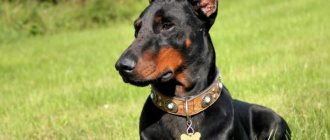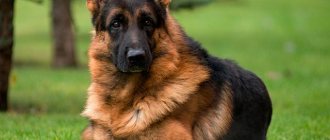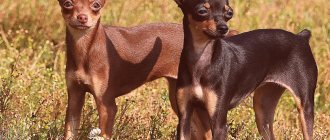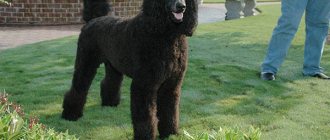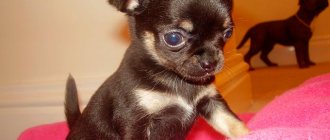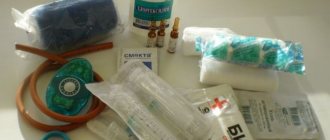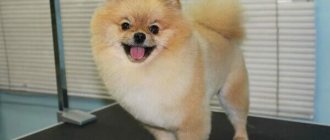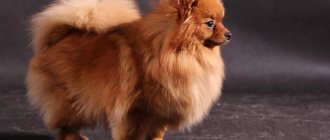The Pekingese is a small breed of dog native to China.
Its representatives are proud and independent, and practically impossible to train.
Many note that a long stay in the imperial palaces of China left its mark on the genetics and character of the dog.
They are imposing, leisurely and rather capricious.
Such pets are not highly intelligent and are able to learn only the simplest commands.
At the same time, Pekingese are quite densely built, have good health and live quite a long time.
Height at the withers reaches 20 cm, weight – 5 kg, life expectancy 15-20 years.
Quality maintenance and care
Before you buy a Pekingese, you should know that this dog requires care, which includes:
- Keeping the coat trimmed, especially around the paw pads and between the toes, the Pekingese also needs regular grooming.
- Daily walks. The pet should be walked daily, 2 times a day for at least half an hour.
- Nail cutting with a special nail clipper should be done at least once every 2-3 weeks.
- Eye care requires special attention, the reason is the specific structure of the eyes. Due to the shortened tear duct, the dog's eyes are susceptible to injury and inflammation. For this Pekingese, the folds lying on both sides of the bridge of the nose are washed daily with a special solution.
- The dog's ears also need daily inspection and regular cleaning with a dry cotton pad.
- The Pekingese's coat should be brushed daily using a dog brush. It is also advisable to use a special aerosol for combing, which protects the hairs from splitting.
- You should bathe your dog when it gets dirty, using dog shampoo for long-haired breeds.
The Pekingese's coat is quite coarse, so it is advisable to use cosmetics designed specifically for hard and coarse coats.
Lifespan
The average lifespan for this breed is fifteen years.
But don’t be upset, because your pet can live even more than twenty years.
This is possible provided that you are able to organize good care for him and a calm lifestyle.
In general, they have a completely healthy gene pool and the diseases that are often attributed to them are explained by the specific structure of the skull and torso.
- Deformation of intervertebral discs.
- Stretching of the heart valves.
- Cataract.
- Turning of the eyelids.
- Keratitis.
How to extend life?
In order for your dog to live longer it is necessary:
- Visit the veterinarian regularly (at least once every six months).
- Carefully monitor changes in your pet’s behavior and well-being; if there is the slightest deviation, you should contact a veterinarian.
- Start raising a Pekingese from puppyhood, because they often find themselves in unpleasant situations because of their character. Pekingese often get into fights with other dogs or get hit by cars.
- Do not allow your dog to pick up scraps on the street; such food often causes poisoning.
- Your pet should be vaccinated annually and follow all veterinarian recommendations.
- Proper and balanced nutrition will help the Pekingese stay healthy for many years, and therefore increase its life expectancy.
- Under no circumstances should the Pekingese live outside, as this is an exclusively decorative breed and yard conditions are not suitable for it.
Main causes of premature death
The main causes of premature death in Pekingese include::
- Infectious and hereditary diseases.
- Poisoning.
- Diseases of the spine, in particular herniated discs, leading to partial or complete paralysis.
- Oncological diseases.
- Infections (staphylococcus, leptospirosis, adenovirosis, infectious hepatitis, rabies, parvovirus enteritis, plague, etc.)
- Injuries, including those received in fights with other dogs.
How to determine the age of a Pekingese?
The age of a Pekingese can be easily determined by carefully looking at the dog's appearance.
First of all, you should pay attention to your teeth. The young pet’s teeth are white, glossy with unworn cusps
In older dogs (2-3 years), the teeth acquire a matte tint, and the tubercles on the toes are gradually erased.
By the age of 5, the cusps on the lower incisors wear off in Pekingese, the fangs become dull, and the teeth acquire a yellowish tint.
At 8-10 years old, the crowns of the dog’s teeth are worn away by almost half, the fangs are dull, and the teeth are yellow.
In older dogs, teeth begin to loosen and fall out.
Also, to determine the age of the pet, you should pay attention to the coat and condition of the muscles. Young pets are distinguished by clean, silky, shiny coat, developed muscles and activity.
An older dog's coat is coarser, gets dirty more quickly and has a dull appearance. As for the muscles, often in an older dog they are atrophied, there is excess weight, laziness and apathy.
Life cycle and features
Small breeds are only small in size, but otherwise they are exactly the same as large dogs: they love to run, play, and require the attention and affection of their owners. Young Pekingese are mischievous and restless. With age they gradually calm down, but they carry such character traits as pride, loyalty and willfulness throughout their lives. To successfully train a representative of this breed, the owner should be patient.
The Pekingese has ancient roots
Pekingese require constant care; in this regard, they are very whimsical. It is necessary to constantly monitor their cleanliness and health. The white albino Pekingese requires increased care. The structural features of the skeleton lead to the development of complicated breathing with age. The breed is also prone to problems with eyes, teeth, ears and paws.
Note! Pekingese are best suited for older couples and inactive people. If there are children in the family, it is better that the children are at least 5 years old.
What type of food should I choose?
Veterinarians and dog handlers have still not come to a consensus on what is better to feed the Pekingese: ready-made food or natural food.
Each approach has both advantages and disadvantages. But if you take a responsible approach to preparing the diet, your pet’s health will not suffer in both cases.
Ready-made dog food
Dry food for Pekingese must contain:
- natural meat, not offal;
- cereals and vegetables;
- vitamin and mineral supplements.
This composition will fully satisfy the body's nutritional needs.
Pekingese can be fed super premium or holistic products for small long-haired breeds. When choosing, take into account the individual characteristics of the pet:
- weight;
- age;
- presence of illness or pregnancy.
There are hypoallergenic and medicinal lines designed for dogs with various diseases. They help normalize the functioning of internal organs, strengthen the immune system and correct weight.
Most owners feed adult animals with the following brands:
- Orijen;
- ProPlan;
- GoldenEagle;
- Bosch;
- Acana;
- Piccolo;
- GO! NATURAL Holistic;
- Grandorf.
It is allowed to alternate wet canned food and dry food. The former add variety to the daily menu and do not cause thirst, while the latter gently cleanse teeth of plaque.
Natural products
The owner needs to make the natural diet varied. Otherwise, your pet will quickly get bored with the same food and begin to refuse food.
In addition, this way the dog will receive a maximum of useful substances, which will have a positive effect on its health and appearance.
What is allowed to feed adults:
- lean meat - beef, rabbit, chicken, turkey;
- offal - heart, tripe, chicken offal, kidneys, liver;
- sea fish - horse mackerel, mackerel, halibut, etc., except pollock;
- porridges – rice, buckwheat, millet, oatmeal;
- fermented milk products - kefir, cottage cheese, bifidok, yogurt without dyes and fillers;
- vegetables - fresh carrots and tomatoes, boiled zucchini, beets, cauliflower;
- greens - parsley, sprouted oats, lettuce;
- fruits - bananas, pears, nectarines, apples.
What to feed your Pekingese
When you decide to adopt a Pekingese puppy from a breeder, you need to find out the daily diet.
Advice! If the puppy eats natural food, and you want to switch him to dry food, then the transition must be carried out smoothly, otherwise the digestive system will suffer.
Consult your veterinarian about what food is suitable for this breed, and look at the condition of the dog's coat - the coat should be shiny. If it fades and the animal is reluctant to eat, then take the Pekingese to the doctor and choose another option.
If the dog eats natural food, then its basis should be boiled meat (chicken and beef), cereals (rice, buckwheat, millet), and vegetables. You cannot feed your dog fatty, salty, smoked or sweet foods . Pekingese is an unpretentious breed of dog.
Care
So, what do you need to know about the care and maintenance of the Pekingese? Let's figure it out. Let's start with the ears.
Behind the ears
The dog's ears have long hair. You should constantly inspect your pet's ears while brushing. Sulfur removal is done with a cotton swab, which must first be moistened in a disinfectant solution (can be purchased at a pet store). If the ears are constantly itching and the dog is constantly shaking his head, then this is a signal to visit the veterinarian.
Behind the wool
Pekingese have long hair with a thick undercoat. This is one of the main decorations of this breed. Therefore, caring for a Pekingese, first of all, involves taking care of the coat, i.e. grooming. At home, the dog needs to be brushed not just often, but daily. The ears, chest, sides, and area under the tail require especially careful combing.
To brush your Pekingese, you will need a long-handled metal comb and a wire brush. When it's hot, your dog could use a haircut. Specialists will groom your Pekingese “like a lion,” and he will be simply magnificent. You can bathe your dog no more than twice a month, but you shouldn’t wash your pet’s face - just wipe it with a damp cloth every day.
Related article: How to give a fashionable haircut to a Yorkshire Terrier at home
Behind the teeth
If you feed your dog a balanced professional food, then most likely your pet’s teeth will be healthy. While chewing the granules, the natural plaque is removed. You can often notice yellow discoloration and stains on the teeth. Contact your veterinarian for professional dental calculus removal. To prevent tartar from forming, try brushing your pet’s teeth with a toothbrush, but not all Pekingese agree to put up with this procedure.
Behind the claws
Representatives of this breed are not fans of running, which is why Pekingese claws require special care. Nail trimming should be introduced when Pekingese dogs are still puppies. This should not be done often, only when necessary. When trimming claws, only the very tip is cut off; the hair between the toes also needs to be trimmed. If the claws are not given proper attention, this can lead to damage to the claw. Of course, the procedure for trimming nails does not require haste. Purchasing a nail clipper from a specialized store will greatly ease the situation.
Feeding
Feeding is one of the most pressing issues for Pekingese owners. Dogs tend to be picky about food. A feature of the breed is the underdevelopment of fangs, so the meat should be finely chopped or twisted in a meat grinder. Meat and offal are lightly boiled. Cheese is rarely given, except as a reward.
Feeding with vegetables is carried out once a week. Use only those that do not cause bloating. Fermented milk products are given separately or with fruit. Pickles, smoked meats, pasta, potatoes, anything fried, chicken and fish bones are strictly prohibited. To prevent the formation of tartar, you can give beef bones. Proper nutrition will help the owner avoid such an unpleasant problem as diarrhea in the Pekingese.
Clothing and walking
When the weather is cool outside, despite its long coat, the Pekingese will need clothing. In your winter clothes wardrobe it would be nice to have a warm jumpsuit with padding polyester. Choose a soft fabric, and the overalls themselves should not hinder movement. The dog should feel comfortable in it. In wet weather, clothing for the Pekingese is a jumpsuit with a hood. It is needed to hide long ears. In the summer, a mesh jumpsuit would be a good idea. Of course, the dog is not cold, but protecting its beautiful coat from dust and mites will be very useful.
It’s good if your pet doesn’t have fleas, but as a useful accessory to a summer outfit, a flea collar will be useful. Fashion designers for dogs offer a very useful thing - soft boots. They will protect your paws from dirt and salt on the roads. You can attach a bow to your pet's leash as a decoration. Pekingese are not couch dogs; you need to take them for walks regularly.
Elements of daily Pekingese coat care
The main component coat care is constant brushing. This is done 1-3 times a week. If you can spend 10 minutes daily brushing your pet with a soft massage brush, this is an ideal care option.
To care for your Pekingese, you need 3 types of combs : a metal one with sparse long teeth, a slicker brush (a rectangular comb with fine, fine teeth) and a soft massage brush . The first two are used 1-2 times a week, and the dog can be massaged every day.
Accessories necessary for a pet
It is important for the Pekingese to have his own secluded place where he can rest and hide his toys. But at the same time, it is necessary that this place is not in the corridor or in the kitchen, but in close proximity to the owners
Place a Pekingese dog bed or house in the bedroom, as the dog will constantly come to you. Your pet will need the following essential accessories to maintain comfort:
- Bowls for water and food. They should be in the kitchen, heavy in weight (iron or ceramic) so that the dog does not turn them over. There should be clean water in the bowl at all times.
- A tray that will be used during quarantine after vaccination or during an animal illness when walking is prohibited.
- In autumn and winter, they walk in overalls and clothes for Pekingese, which are designed to protect them from dirt, since the dog is short in stature with short legs.
Advice! The overalls should be made of bolognese fabric with a silk or satin lining. Synthetic materials are undesirable, as the dog may develop allergies and scratch the skin until it bleeds.
After each walk in the suit, you only need to wash the paws and the area under the tail.
For walks you need a collar - thin and light. To avoid rubbing the fur on the neck, choose collars made of nylon or genuine leather. The correct size of this piece of equipment is when a finger is placed between the dog's neck and the collar. Then nothing will squeeze the animal’s neck or rub it.
- The leash can be made of nylon, canvas or braid. The maximum length is 5 meters. The Pekingese can also be walked on a roulette wheel, but strict collars are not suitable for this breed.
- A carrier is an important accessory that is necessary for trips to the doctor, out of town, or for your dog to travel on a train.
- Dog toys should be soft (such as silicone or rubber) and not contain metal parts.
- To care for the coat, you need an arsenal of products: shampoo, conditioner, shampoo for daily washing of paws (for example, baby shampoo), several types of combs.
- A nail clipper and small scissors with rounded ends are needed for hygiene procedures, which the puppy is taught to do immediately.
- To protect against ticks you will need drops, shampoos and sprays.
Pekingese training basics
The Pekingese is a calm breed of small dog and does not bark over trifles. The breed is easy to train. If you have the time and desire to explain basic commands to your dog, then get ready to waste your time or take your puppy to a professional for a couple of lessons.
Important! Do not yell at your Pekingese under any circumstances - he will not understand you. You need to speak quietly, strictly, or pretend to be offended and remain silent. The dog will come to you on its own, you can explain to it how and what to do correctly, but this will require time and patience.
If your pet constantly barks at passers-by while walking, then say “Ugh!”, “No!” every time. and lightly tug on the leash. Barking for no reason at home most often means that the dog is trying to show the owner that he is protecting the house. This needs to be weaned off through training and commands.
The Pekingese is an owner by nature ; he chooses one owner whom he is ready to obey (most often this is the one who is the head of the family). The dog is supportive of children, but wary of strangers.
It is important to give your Pekingese a lot of time. Also, regularity and unhurriedness in everything are important for the breed - therefore, Pekingese are easily suitable for older people or those who like to spend time at home and appreciate comfort and orderliness.
Symptoms of a boil
Boils can appear anywhere, but they most often occur in areas where there is hair, sweat, and friction. Boils often form on the face and neck, under the armpits, on the genitals, thighs and buttocks.
First, a red spot appears on the skin around the hair root, the skin above which swells and becomes dense. Pain appears. The boil increases in size and a purulent cavity forms in its center, which is usually visible through the skin in the form of a yellowish “head”. Above the purulent focus, it is usually possible to see a darker purulent-necrotic core.
Most often, after some time, the boil opens and pus flows out. After this, relief comes, the pain goes away and the skin gradually heals. A barely noticeable light scar forms at the site of the boil. This process can take from two days to three weeks
It is very important not to squeeze out the boil, as this leads to serious complications.
Delirium tremens symptoms and signs
The cause of the onset of pathology is chronic alcoholism. The onset of delirium is most often diagnosed approximately five to seven years after the onset of constant consumption of significant doses of alcoholic beverages.
- The list of main features includes:
- absence of a feeling of deep disgust for any drinks that contain “degrees” at moments when the patient is sober, which is diagnosed as a sign of the onset of alcohol-induced psychosis;
- an agitated state after emerging from a binge, with the possible presence of hallucinations and delusions;
- patients in a state of delirium may be prone to aggression.
Symptoms are observed in patients who constantly take large doses of alcoholic beverages. “Delirium tremens” can begin after a single dose of alcohol-containing substances in patients with chronic diseases of the central nervous system, who have suffered head injuries, and who are in poor health. The minimum dose can provoke an exacerbation in patients who have previously suffered an attack of delirium tremens.
Delirium begins when, after prolonged drinking, the patient stops drinking alcohol and quits the binge. In most cases, an attack occurs within 2-4 days after stopping use. The harbingers of the attack become:
- slurred speech;
- vomit;
- impairment of neurological status;
- headaches.
The first sign of the onset of delirium is sleep disturbance and a constant feeling of anxiety. Visual and auditory illusions may occur. They intensify on the fourth night after the onset of the illness, becoming strong and intrusive. The illusions contain animals, insects, and fairy-tale characters. The patient is tormented by tactile “deceptions”, during which it seems to him that insects are crawling on the skin, and other tactile sensations arise that are absent in reality.
Adequate perception of time is impaired. The hands are in constant motion, the patient strokes himself and feels. Often such symptoms begin at a stage when delirium tremens can already lead to death.
During an attack, the patient's condition becomes unstable. Periods of aggression and excitement are followed by periods of calm. In many patients, the mood becomes joyful and complacent, he laughs loudly, but joy in seconds can turn into aggression or give way to a panic attack. At the first signs of the disease, immediate contact with a specialist is required; an ambulance may be called.
As psychosis increases, physical condition worsens:
- body temperature rises and often reaches 40 degrees;
- heartbeat becomes uneven and rapid;
- blood pressure rises;
- dehydration appears;
- ESR and leukocytes increase;
- the patient suffers from chills, followed by increased sweating with a characteristic smell of “unwashed feet”;
- yellowness of the skin is noted;
- the dermis becomes pale, which gives the name to the diagnosis, and hyperemia of the facial skin may also be noted.
The disease develops in several stages. During the first, sleep is disturbed, mood worsens, and depression appears. The second is characterized by the appearance of increased jealousy and suspicion. In patients with the third stage, alcoholic psychosis manifests itself, the patient suffers from irreversible health problems.
How to extend the life of a pet at home
Despite the fact that they live for a long time, it is important to care for them properly. General recommendations:
General recommendations:
It is necessary to take your dog for a veterinary examination annually. And if the animal is sick, this should be done at least once every six months. It is necessary to raise the Pekingese correctly. His character is somewhat reminiscent of a child's. As a result, loss of concentration on the owner, which increases the risk of accidents and reduces life expectancy
This is especially true for male Pekingese, as they tend to provoke larger dogs into a fight. Proper care and maintenance are important in maintaining the health and life of your pet.
Proper nutrition at home
Natural should consist of:
- from vegetables (fresh or stewed);
- vegetable oil;
- cereals;
- fruits and berries;
- eggs (white only, given once a week);
- raw meat (exclusively lean);
- sea fish (except red);
- fermented milk products.
If the owner is an adherent of industrial feeds, they need to be selected taking into account the individuality of the Pekingese. After all, puppies, pregnant females or dogs with certain diseases need mixtures with different compositions.
Physical activity and life expectancy of Pekingese
This breed is not an active dog. They prefer the comfort that their owners surround them with at home. However, to avoid problems with excess weight, you still need to walk these dogs. Norm: half an hour 2 times a day.
On weekends, you can arrange additional exercise in the form of a two-hour walk with a game. This will be a good workout for the cardiovascular system.
In addition, when an animal receives enough attention from its owner, this has a positive effect on the pet’s psychological health, and therefore on its quality of life.
Treatment. Deworming at home
Most of the diseases to which Pekingese are susceptible are related to the structure of the skull and general anatomy of the body:
- Eye diseases. Pekingese have a very short muzzle. Therefore, a kind of optical illusion arises: it seems that the dog’s eyes are bulging out. With such an arrangement, it is easy to injure the eyeball or contract an infection.
- Diseases of the respiratory system. Due to their flattened muzzle, dogs cannot breathe properly. Therefore, they often have laryngitis, bronchitis and other ENT diseases. In this regard, you need to protect your pet from hypothermia.
- Diseases of the musculoskeletal system. Pekingese are prone to dislocations, osteochondrosis and hernias.
- Diseases of the digestive system. There are many reasons for gastrointestinal dysfunction. The owner can determine the first signs of illness on his own. The Pekingese's belly becomes like a drum or becomes very inflated. The dog whines or howls. In such cases, you should immediately take the animal to a doctor.
It is not always possible to notice signs of illness at home. Especially considering that some diseases can occur hidden
Therefore, it is important to visit your veterinarian periodically
It is much better if a professional detects the disease at an early stage than treatment begins when the disease begins to progress.
To maintain health, you need to properly worm your dog. Puppies are dewormed every 3 months. After this, vaccinations are given.
A short interval is needed because the small body is still too weak and may not withstand the double load of drugs.
Adult dogs are vaccinated annually using a comprehensive method. Medicine for worms is given once every six months throughout life.
Hygienic care at home
not difficult:
- It is necessary to comb out the ears daily, while simultaneously inspecting the inside of the sink for contamination. If dark plaque is detected, it is enough to clean the surface with a cotton pad soaked in hydrogen peroxide.
- To maintain the normal condition of teeth, it is worth allowing cartilage to be chewed. Due to their nature, not all Pekingese allow their teeth to be brushed.
- Claws should be trimmed with a guillotine no more than once every 2 months.
- The coat needs to be brushed every day. It is recommended to use special combs or combs.
Interesting facts about the breed
There is a lot of interesting information about the Pekingese breed.
The most notable facts are:
- They arrived in the Netherlands, Germany and the USA at the same time, despite their earlier spread in Europe.
- When analyzing the DNA of Pekingese dogs, scientists determined that they are close relatives of pugs, papillons and chihuahuas.
- In ancient China, imperial dogs were breastfed and buried with their owner.
In China, the Pekingese is considered a symbol of good luck and prosperity. To attract wealth, the Chinese place small figurines of these animals in their homes.
How many times a day should I feed?
The number of meals depends on the age of the animal. As the puppy grows, they are fed less and less, gradually moving towards two meals a day.
Up to 1.5 months, food is given 6 times a day, even at night, because puppies can only eat a small portion at a time. Subsequently, the frequency is reduced:
- from 1.5 to 3 months – 5 times;
- from 3 to 6 months – 4 times;
- from 6 to 12 months – 3 times.
A one-year-old Pekingese is considered an adult. It is enough to feed him only in the morning and evening. If you don't walk or play with your dog much, it is acceptable to limit yourself to one meal.
The daily amount of food is calculated using the formula: 70 g of feed per 1 kg of weight.
For example, an adult Pekingese weighing 4 kg should be given 280 g of food per day.
However, each dog is individual, so the owner must monitor its condition. You should not allow yourself to gain excess weight, because this is fraught with problems with digestion, heart and blood vessels.
Age compared to human years
| Dog age | Human age | |
| Months | Months | |
| 1 | 6 | |
| Years | ||
| 2 | 1 | |
| 3 | 2 | |
| 4 | 3 | |
| 5 | 4 | |
| 6 | 5 | |
| 7 | 7 | |
| 8 | 9 | |
| 9 | 10 | |
| 10 | 11 | |
| 11 | 13 | |
| Years | 14 | |
| 1 | 24 | |
| 2 | 30 | |
| 3 | 36 | |
| 4 | 40 | |
| 5 | 42 | |
| 6 | 49 | |
| 7 | 56 | |
| 8 | 63 | |
| 9 | 65 | |
| 10 | 71 | |
| 11 | 75 | |
| 12 | 80 | |
| 13 | 84 | |
| 14 | 87 | |
| 15 | 89 | |
| 16 | 91 | |
| 17 | 93 | |
| 18 | 95 | |
| 19 | 97 | |
| 20 | 100 | |
Who lives longer: purebred dogs or mongrels?
You can talk a lot about the lifespan of purebred canines, appeal with scientific and pseudoscientific arguments, give a lot of examples, but it is impossible to deceive nature. The most common mistake, to put it mildly, by many breeders is that an individual with one or another disease is not removed from breeding. But concealing the true health status of even a very beautiful dog can be regarded as a crime. Even chronic otitis media is passed on to descendants; what can we say about more serious diseases?
Perhaps there is some truth in the statement that the life expectancy of a simple mongrel is longer than that of a purebred dog. There is no clear answer to the question of how long mongrel dogs live. On average, the life span of canines is 15 years. Outbred yard terriers, born in extreme conditions, undoubtedly have stronger immunity compared to representatives of breeds, especially older lines - bulldogs, St. Bernards, Newfoundlands or Irish wolfhounds.
Yes, all of the listed breeds are canine giants. But even among mongrels there are many large individuals who, nevertheless, live much longer than purebred dogs. Lack of care and timely vaccinations do their job - natural selection occurs, where the fittest survives.
Types of purchases and how much they cost
There are three classes of Pekingese dogs:
- Breeding class (for breeding).
- Pet class (for keeping as a pet).
- Show class (for participation in exhibitions).
Show class animals are the most expensive, pet class animals are the cheapest.
Depending on the age, you can buy a puppy:
- 1-1.5 months.
- two months old
- 4 month old.
- six month old.
Most often, two-month-old animals are purchased. Here we must take into account that the characteristics of the breed breed and show classes are fully formed only by the age of six months.
Depending on the place of purchase:
- From a professional breeder.
- According to an ad on the Internet submitted by ordinary people (Pekingese owners).
- In the nursery.
- At the pet market.
- At the shelter.
The most expensive dogs are from breeders, and the cheapest ones are at a pet market or through advertisements from ordinary people. In shelters you can adopt an animal that finds itself without an owner for free.
Story
Why the breed received this name is anyone's guess. Beijing is the well-known capital of China, and it was there that the rulers of the country lived, whose attribute were small dogs. The word “attribute” was not chosen by chance. No other dog in the world has been awarded such honors. Almost every pet had several servants at once. They ate exceptional dishes, which were presented on golden trays. The most amazing thing is that Eastern people developed very quickly in many branches of science. In those days, no one had even heard of genetics and the basic principles of cynology, but the selection of puppies for further breeding was very careful. Thus, the breed developed correctly, avoiding unnecessary defects.
Only Chinese emperors could own Pekingese dogs.
Any person, no matter whether it was an ordinary peasant or a high-ranking official, could be subject to the death penalty if he illegally obtained a precious puppy.
And there was only one legal path - to become worthy of the imperial favor.
There are no earlier historical facts, which means we have a wide field for imagination. One of the legends tells us about the love passion that broke out between a lion and a monkey. The result of such an amazing union was small lion-like dogs with a monkey's face. Another legend tells that Buddha decided to give humanity a gift, and did not find anything more useful and valuable than our heroes. The list of incredible versions about the origin of the imperial four-legged friends can be continued, but all of them will be far from the truth. Today there is no doubt left about the fact that the Pekingese were artificially bred at the behest of the reigning persons.
They were called "Fu" back then. Short, but not very attractive. In addition to their decorative function, they also played a sacred role. Together with the deceased ruler, his faithful pets were also supposed to go to another world. This is why small dog skeletons are so often found in burials.
It is unknown whether the animals were killed before burial or whether they were placed in the grave alive. This ritual had to take place because the Chinese believed that it was these unusual small animals with a lion’s mane and a monkey’s face that were able to save a person from his earthly sins, thereby cleansing him before the face of God.
During the capture of the summer palace by the British, soldiers broke into the empress's chambers and found her lifeless body. The ruler chose death over capture by foreigners
Several unusual dogs were sitting next to the owner, which attracted the attention of the British. They took their trophy and the Pekingese were later presented to Queen Victoria.
So, for the first time, our heroes were able to cross the border of their historical homeland and move from east to west.
Now the life of privileged people has changed dramatically. Instead of servants and gold trays, the Pekingese had to serve as a watchdog, hunting dog, pet of the nobility and common farmers.
It should be noted that at that time the appearance of animals was very different from what we are used to today. Significant changes befell the breed along with fashion trends of different eras. At one time, dogs with a strongly flattened muzzle were held in high esteem, as a result of which our heroes were expected to undergo a transformation. It was the European period that became a time of change. As a result, we have many varieties and even several standards. The standards adopted in 1966 by the Fédération Cynologique Internationale are still in effect.
Long-lived dogs
Despite statistics and calculations, nature never ceases to amaze; the Guinness Book of Records confirms this. On its pages there is data about long-lived dogs that have outlived their required age by more than 2 times:
- The first record-breaking pet was the Austrian shepherd, whose lifespan was more than 29 years. All his life the dog guarded sheep flocks and was active until his last days.
- Terrier Max is approaching his 30th birthday. The dog never received any care and ate regular food.
The length of a dog's life is individual, but the owner of the dog can make it long enough, happy, colorful!
Among some breeds there are real long-lived dogs. All other things being equal, a border collie, for example, will live longer than, say, a boxer or a great dane.
The Dachshund is the most famous, friendly hunting breed. The dachshund, despite its appearance, is a courageous, courageous, serious, purposeful, and independent dog. These funny little guys live up to 17 years on average, but sometimes reach the 20-year mark.
The main “danger zone” is a long spine, problems with intervertebral discs are possible; tend to be overweight, more often when they begin to age. These problems can be prevented by balanced exercise and a healthy diet.
Yorkshire Terrier: representatives of this, at first glance, small and weak decorative breed live on average 14-16 years, which is longer than huskies. The Yorkshire Terrier weighs 2-3 kilograms, but it is not fragile - they were previously used to exterminate rats.
This fact does not prevent their owners from decorating their pets with various bows and ribbons. The diseases to which Yorkies are susceptible are caused by “smallness.” This list includes non-overgrowth of the fontanel, cryptorchidism, Perthes disease, distichiasis.
An active and smart Beagle will not let its owner get bored. These cheerful and noisy pets live an average of 15 years. They have a good appetite, especially in adolescence (they eat whenever they see food), so they do not need to be overfed.
Obesity will not benefit the Beagle. Epilepsy is relatively common, but it can be successfully treated. Typical diseases of beagles are boils, glaucoma, and cataracts. Due to the long, flexible ears, the inner cavity does not receive sufficient ventilation, which will lead to infections.
Preparing for the arrival of a puppy
Caring for a Pekingese at home is not difficult if you know and follow certain rules.
First you need to clean up the room. Hide the wires in a special box. Puppies have itchy teeth, so they chew everything that gets in their way. You should also remove shoes and all small objects that are placed on the floor.
Caring for a Pekingese puppy begins with choosing the right place for the pet. The litter should be placed in a quiet, dry place, hidden from drafts.
It is worth remembering that these dogs overheat very easily. If in the summer the temperature in the apartment rises above 20 degrees, this will greatly affect the puppy’s health. Therefore, it is better for people who have air conditioning at home to have such pets. If high temperatures do not last long, wet bedding will save your pet from overheating.
Buy two bowls: one for food and one for water. They should be heavy enough so that your pet cannot turn them over. The baby must have toys.
When the puppy grows up, you need to buy special clothes that will protect from rain and snow.
Owner reviews
A few reviews:
“My Mister Pickwick is an amazing dog, he seems to have been made for me. We spend a lot of time together, walk twice a day for half an hour. He is so smart and delicate that he will never mess up the apartment. He will endure it and ask to go outside.”
“I’ve never had a dog and I didn’t want to get one, but my wife demanded it. Now there are more problems. Our Jack gets conjunctivitis three times a year, and if he eats something wrong, he immediately gets an upset stomach. In winter we went for a walk and his paws were frozen. Just awful!".
What and how affects the life expectancy of dogs
The lifespan of a dog, regardless of breed, is influenced by a number of factors. They can both significantly reduce the time allotted by nature and extend it.
Heredity
Many dog breeds have diseases that are passed down from generation to generation at the genetic level. Some problems may be due to the anatomical characteristics of a particular breed, such as:
- Dachshunds often suffer from discopathy - displacement of the spinal discs. This is due to short legs, which is why the skeleton base experiences increased stress.
- Large dog breeds are often associated with hip dysplasia. Body weight has a negative impact on the formation of the skeletal system.
- Brachycephalic breeds (pugs, bulldogs, Pekingese) experience breathing problems, including bronchial asthma. Their nasal passages are severely curved and narrowed, preventing air from passing freely through them.
Many genetic diseases can be detected using special tests. Their results are usually requested from the breeder when purchasing a puppy.
Conditions of detention
Living conditions can play a decisive role in a pet's lifespan. So, there are breeds that are intended only for apartment keeping. These are all decorative and small dogs. This also includes the majority of short-haired breeds, whose coat cannot protect in cold weather, causing the dogs to become hypothermic and begin to get sick.
Veterinarians have proven that keeping a dog on a chain greatly shortens the life of a dog. The point is not only in the limitation of mobility, which weakens the body, but also in the deep stress that such pets begin to experience.
However, there are breeds that can easily live in the yard (but not on a chain) in a spacious enclosure. These are usually dogs with medium length hair and a thick undercoat. This includes all huskies and northern sled dogs. But separation from family life will still have an adverse effect on their well-being. Therefore, such a pet should be given maximum attention and be sure to be walked at least 2 times a day, preferably with active games.
There are a huge number of notices posted around my city about missing huskies or huskies. This is not surprising. People, paying tribute to fashion, get dogs whose essence they know nothing about. But they themselves are at work all day or going about their own business. But these are very active breeds that need to run 5-6 hours a day. So the dogs use the slightest opportunity to escape from such careless owners.
It is very important for a dog to understand that people need it for some kind of work: let it be guarding the yard, supplying some things (or even slippers). A pet must have some responsibilities so that it feels important.
Physical activity
Physical activity is the key to a dog's longevity. There are breeds for which it is vitally necessary (for example, all hunting dogs). But other pets should not be left motionless. Strong physical activity helps fight excess weight and trains the respiratory and cardiovascular systems, which can protect your pet from various diseases.
Movement is life not only for humans, but also for dogs
Other factors
Unfavorable factors that can shorten a pet’s life include:
- frequent births - the dog’s body is simply exhausted from constant hormonal changes; at least a year must pass between births;
- sexual abstinence - if a dog does not satisfy its sexual instincts, this will end disastrously for its health; many pets die from cancer of the reproductive system;
- medical care - a dog can become infected with an infection even without walking; the owner will bring the infection into the house on clothes or the soles of shoes, so pets must be vaccinated and regularly examined by a veterinarian;
- dietary features - many owners cannot resist treating their pet with a treat from their table (sausage, piece of cheese, cutlet), forgetting that spices, fat and salt cause irreparable damage to the health of dogs.
Character
In reviews of the character of Pekingese dogs, the word “peculiar” is often used. This is not without reason; indeed, such a small creature usually does not have so many formidable features.
It is possible that our heroes inherited a slightly arrogant attitude towards others from the times when they were presented with food on a golden tray.
Self-esteem and even pride underlie the behavior of these seemingly cute creatures. If you show rudeness or cruelty towards him, you will definitely receive a response.
Your pet is not able to realize its size. There is no worthy enemy for him, so without any fear, they are ready to pounce on the big dog and pay for their arrogance.
They are strict and intolerant with small children. So, you should not trust your baby to a pet; it is possible that their friendship will end in bites and crying. But our friends are perfect as companions for older people.
Don't think that such a cute baby doesn't need training. Pekingese puppy training is simply necessary, and it should begin as soon as the puppy appears in your home. If you let character development take its course, in most cases you will end up with a spoiled and capricious dog. If you wish, you can even train your pet to use the litter box. And then in rainy weather you will be spared the need to go outside once again.
Description of the external appearance of the Pekingese
- The head
is bulky, with an extended flat frontal part. Cheekbones are not visible. - The muzzle,
when viewed from the side, is absolutely flat. The transition to the forehead is sharp. The lips are at the same level and do not hide a well-developed chin. Small teeth and tongue should not be visible. A bite in the form of a small snack. The incisors can be staggered. - The nose
is black, not too short, wide, snub-nosed. The nostrils are large and open. - eyes
are placed far apart. Quite large, round, convex and shiny. The eyelids are darkly pigmented and fit tightly to the eyeballs of a very dark color. - The ears
are set on the top line of the head. Heart-shaped, drooping, close to the cheekbones. - The neck
is located high, dry muscles, short, and has no dewlap. - A body
of massive bones and strong muscles. The croup is slightly round and slightly sloping. The withers are pronounced, the back is straight, the loin is short, the chest is voluminous. - The tail
is set quite high, curved to the line of the spine. Long, lush guard hair grows on it, decorating it. - The forelimbs
are short, strong, with a massive skeleton. The shoulders are oblique, the forearms are S-shaped. The wrists are close to each other, slightly turned outward. - The hind legs
are parallel, of a lighter skeleton, slightly longer and narrower than the front ones. The hock joints are pronounced. - The paws
are flat, oval in shape, the toes are tightly closed to each other. The front ones are larger than the rear ones. - The coat is two-layered.
The upper guard hair is thick and coarse, and the lower guard hair is a dense and soft undercoat. The coat is moderately long and forms a mane, which forms a collar on the neck that does not extend to the shoulders. The wool forms puffy pants on the back of the thighs. The hair on the rump and hind legs creates a raised appearance of the hindquarters. The full skirt can reach the ground, but the length and volume of the coat should not impede the dog's movements or hide the shape of the body. The longest hair adorns the ears and tail. If the dog throws it on his back, then it falls apart beautifully. - The color
of the Pekingese can include a great variety of colors. Dogs are not solid colors; they should have a black mask on the face, as well as the tips of the ears and rims around the eyes. A white spot on the forehead is rare and valuable. It is not recommended to breed chocolate-colored dogs. In terms of health, such people with this color have no flaws, but the light rims of the eyes and the same color of the nose and lips do not look aesthetically pleasing.
Factors influencing lifespan
The life expectancy of dogs is influenced by factors:
Physical development; Does the animal perform loads appropriate for its age and breed; Complete rest; A balanced diet enriched with nutrients; Sufficient communication and attention.
All these quality indicators of life depend 100% on the owner. The way he takes care of his pet shapes the animal’s resistance to stress and various diseases.
A balanced diet from birth lays the foundation for the pet’s physical health for the rest of its life and even into old age. An older dog should be fed soft food to avoid problems with teeth and swallowing.
In old age, animals can suffer from various diseases, most often deteriorating hearing, vision, and disruptions in the urinary system.
Another problem that can significantly reduce the age of any animal is excess weight. Its excess has a bad effect on the pet’s health, affecting the cardiovascular system and bone structure. It is necessary to control the weight of the animal, especially in old age.
Regular medical examinations, vaccinations, timely contacting a veterinary clinic in case of problems - this is what will keep your pet in the right shape. Constantly caring for your pet throughout its life can significantly increase its cycle.
Pekingese breed standard
Pekingese puppies
The first Pekingese, brought to Great Britain in 1860, bore little resemblance to modern individuals and looked more like Japanese Chins, but over time, the exterior differences between the breeds began to appear more clearly. For example, over the years of breeding and careful selection, Pekingese dogs have gained weight, and their legs have become significantly shorter. The main feature of the appearance of today’s “lion dogs” is their emphatically compact build. Even a cursory examination of the animal gives the impression that it was compacted with a miniature press from above and in front. The face of a Pekingese is a separate issue, because there is very little dog in it. It is rather the amusing face of an unknown fairy-tale creature with bulging beady eyes and a half-open miniature mouth, from which a neat, rough tongue falls out.
Today the breed exists in two types: classic and so-called sleeve. Sleeve Pekingese are inferior to their counterparts in size, although they are not fully “pouch” pets. The weight of such individuals largely depends on the country of breeding. For example, in the USA and Canada, all animals that gain more than 3 kg are rejected. And this despite the fact that the weight of representatives of this breed in their classic type reaches 5-5.5 kg. Sleeve Pekingese bitches are not bred due to their body type, which does not allow them to fully bear offspring, therefore, surprisingly, miniature puppies are obtained from full-size producers.
Head
White Pekingese
The Pekingese has a massive, strongly flattened skull between the ears with a clearly defined stop. The dog's muzzle is short, stretched in breadth, bordered by a v-shaped fold that goes around the bridge of the nose and ends on the cheeks.
Teeth and bite
The Pekingese's small, even teeth are hidden behind the lips and are practically invisible. As for the bite, a moderate underbite is typical for the breed (this point is not specified in the standard).
Nose
The Pekingese has a flattened and fairly wide nose. The lobe is black, brightly pigmented, with wide, well-open nostrils.
Eyes
The Pekingese's large, round and sometimes slightly bulging eyes give him a somewhat surprised look. The standard color of the iris is dark. Light-eyed individuals are regarded as plembrac and are not allowed to compete.
Pekingese muzzle
Ears
The Pekingese's high-set, heart-shaped ears hang down along the head and reach the line of the lower jaw. The decorative fur on the ear flap is long and soft.
Frame
Cute pug
The Pekingese's body is short, with a noticeably weighted front, a well-defined waist and an almost straight back.
Limbs
The front legs are short, thick and bony with shoulders facing backwards and elbows pressed to the sides. The hind limbs are set close to each other and have lighter bones. The angulations of the hind legs are normal, the hock joints are relatively stable. The Pekingese's paws are large, flat, without the roundness characteristic of most breeds. The front paws are slightly turned outward, while the hind paws point straight forward.
The Pekingese moves slowly and importantly, as if rolling
Tail
The dog's tail is set high and has a slight bend towards the end, which allows it to hang over the right or left hip.
Wool
The stylish “fur coats” of the Pekingese are formed by a layer of delicate undercoat and long, coarse outer hair. The dog's neck is wrapped in a voluminous wool collar. There is decorative hair on the ears, tail, toes and back of the legs.
Color
According to the standard, the Pekingese can have any coat color. Exceptions are albino dogs and liver-colored dogs.
Mating and breeding of Pekingese
Only dogs of show and breeding classes that are physically and mentally healthy are allowed to participate in breeding. Puberty occurs in males of this breed at 6–7 months, and in females at 6–11 months.
It is recommended to breed a pet no earlier than 10–12 months. If the bitch comes into heat earlier, then this period can be adjusted to avoid too long a break between puberty and childbirth.
There are several important nuances in breeding Pekingese:
- with a long break between the first heat and mating, the bitch may not give birth on her own due to the compaction of the pelvic girdle;
- Cryptorchid (males with 1 or 2 undescended testicles) are not allowed for breeding, but in some cases descent occurs late, at 10–12 months;
- To avoid problems during childbirth, the female must be larger than the male.
